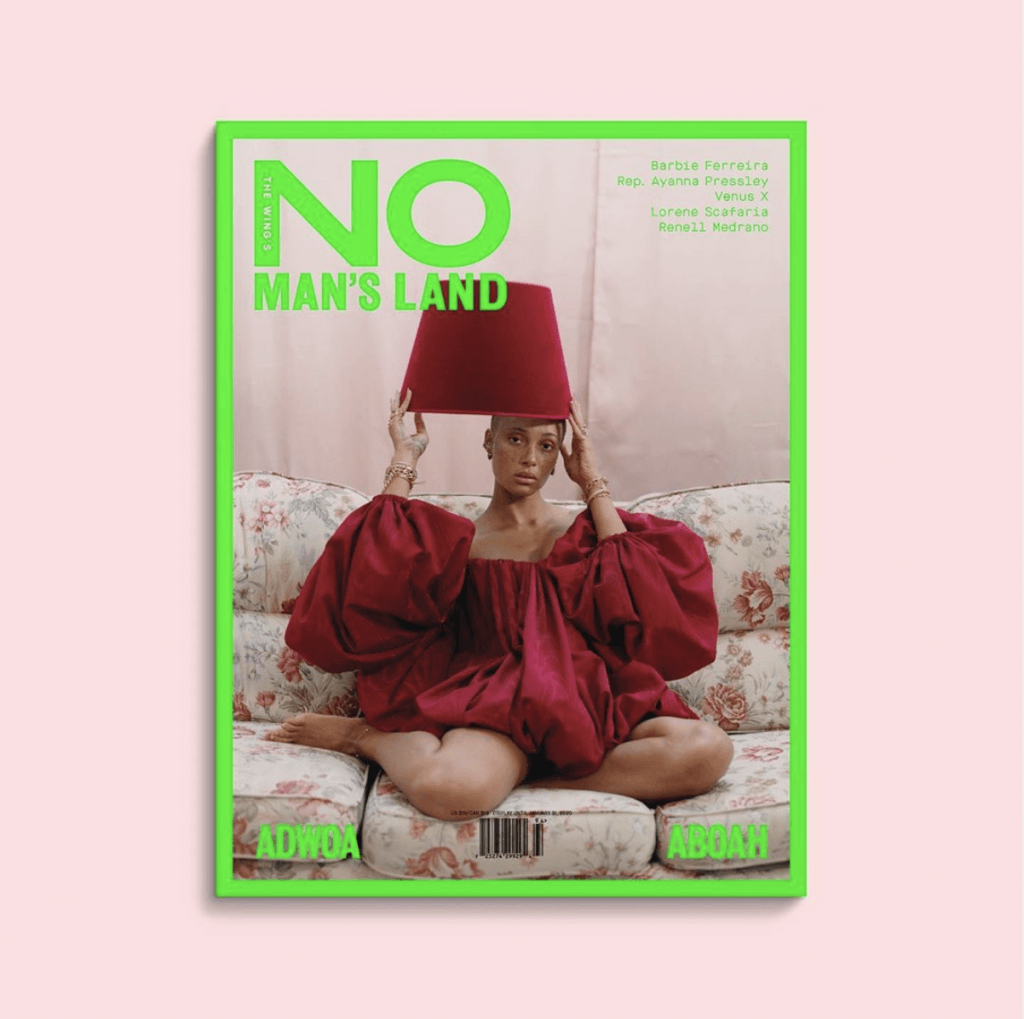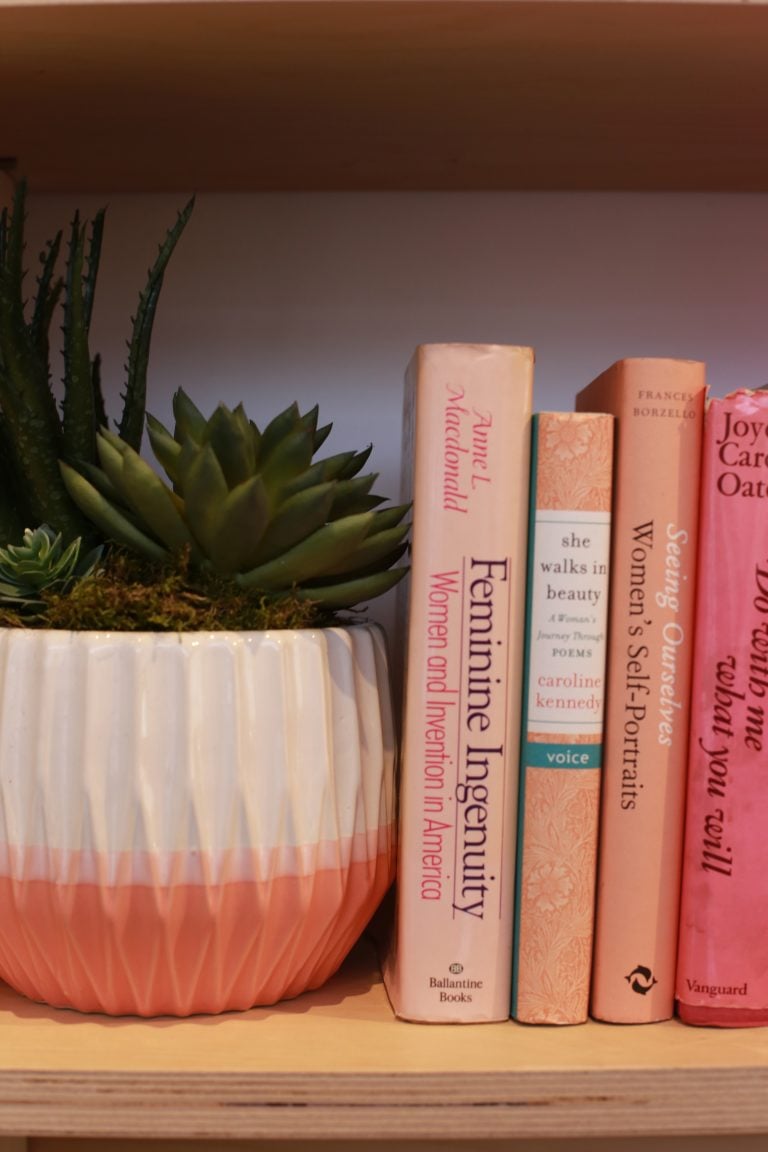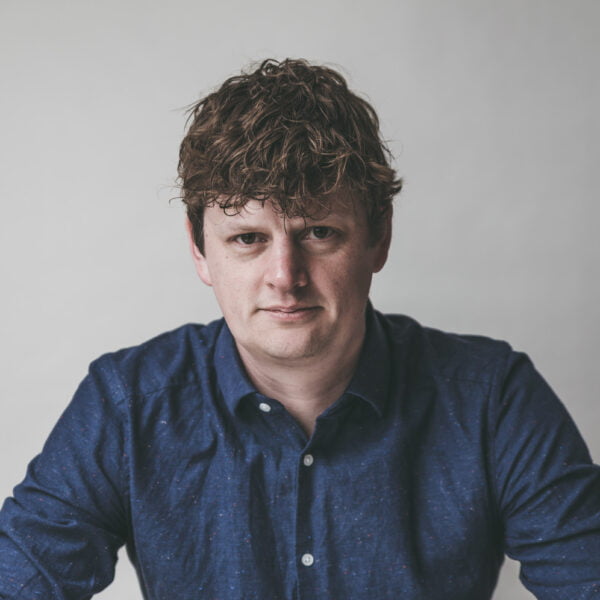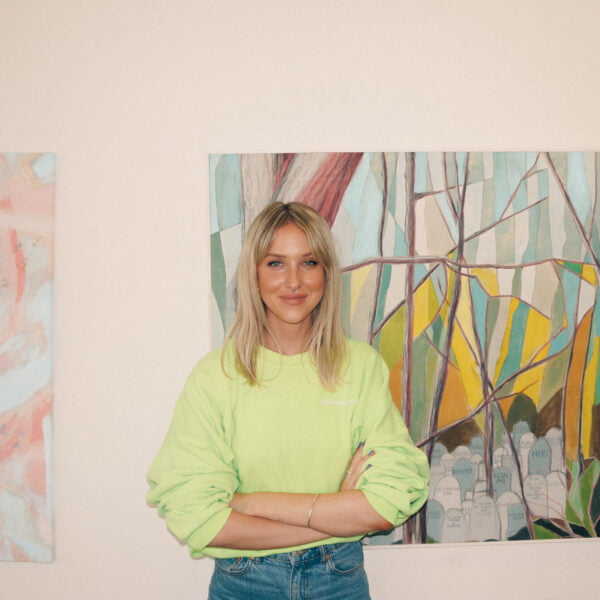
Natasha Collie
Senior Brand Marketing Manager at Penguin Random House UK
At the start of the year, Ladybird Books approached Sonder & Tell with a dream brief. In 2021, a year that’s been particularly challenging for...
In conversation with
Executive Editor of No Man's Land

If you haven’t heard of The Wing, it’s likely that you will have seen their insatiable pastel aesthetic adorning various Instagram feeds, or caught a glimpse of their righteous merch (get in line for their “League Of Unusual Women” hats and “Girls Doing WTF They Like” tees) on achingly woke millennial women across North America.
But in case you missed it: The Wing is a co-working space and community dedicated to gathering, supporting and advancing all women, and are just about to open their first international space in London (very handy for us), as well as launching Issue Nº4 of its storytelling arm No Man’s Land, featuring cover star Adwoah Aboah.
Cue Deidre Dyer who is at its helm, steering the ship towards intelligent writing, inclusive journalism and always flying the flag for the strong women it represents. With editorial credentials from The Fader and a group of creative women under her wing (pun intended), Deidre Dyer is the perfect person for the job.
I’ve always loved books; I loved going to Barnes and Noble and flipping through magazines or international newsstands in Soho. So I’ve always wanted to work in media and writing but I wasn’t sure quite what. My first internship was at Nylon and I was a fashion intern. It was super helpful because it helped me figure out who does what. I thought a fashion intern was helping with the fashion writing, I didn’t realise that was ‘fashion features’ – you have editors who style, who have editors who edit text – so for me it was really important.
My role at The Fader was part-time initially, and I was supporting two editors: one was a writer and one was a stylist, so I was split 50/50. I knew that I wanted to stick with the writing, and became fashion editor there, then after that I went to work for a cannabis brand (Marley Natural) – that was the first magazine that I made from scratch. It was good because I took everything I learned from The Fader, took it there and built it out. That was my first foray into storytelling for a brand.
The editorial team is literally two people (full time) – myself, and the deputy editor whose name is Laia Garcia. Then we have a part time director of photography, Emily Keegin, who we kind of share with The Fader. She’s a really great resource for all things female visual creative; she has female photographers everywhere in the world. Then we have a team of about four contributing editors, then writers and illustrators, and the design team is Pentagram. The process is that Laia, myself and the contributing editors will come together, we’ll meet and review pitches, we’ll get pitches from our community and the general public, then we’ll have brainstorm sessions and review everything to figure out the different sections. There are features that recur, so there are things that will always be set like the Q&A section (there are six of those in each issue), and the cover – I feel like those are the two things we attack first. Then the rest of the book we work out what could be smaller or bigger, longer historical features, what works better as a visual feature…so there’s a lot of conversations, brainstorming and piecing things together.
Not so much independent, because at the core of all of our storytelling is The Wing’s mission. A lot of features have started as events or conversations which have happened in this space, and vice versa. There’s a lot of creative back and forth with regards to the conversations, some of the people and the names which make it into the magazine. The stories are definitely rooted in the brand and the spaces, but we look at No Man’s Land as our storytelling arm, and as a way to bring the same energy outside of our spaces.
I guess because we’re really not. We’ll make the whole magazine, and then the last week before we go to print we think, ‘oh I guess we should make an ad for The Wing’. So we’ll have a direct touch point, whether that’s talking about a new podcast that’s coming, or about Camp. We have readers who might not necessarily know what The Wing is – someone who just picks up this magazine at a newsstand, and they’ll see an ad that says ‘have you heard of The Wing?’. It just shows what we offer and what our community means to us.

Camp No Man’s Land is a member’s retreat over a weekend in upstate New York. We did it last year for the first time in the Adirondacks – it’s literally a lacrosse camp three days before we get there, which we have to Wingify and turn it around. We bring some of the same programming but with more arts and crafts, and last year we partnered with Nike for a customised sports programme. It’s bringing our conversations, our activities and our members out in the wild.
How I personally measure it is by how I feel about it. The first bit of press we received for the first issue was from the New York Times. They asked me what the magazine was all about, and I said that I had always wanted to make something that felt substantial and real: basically I wanted to make something that didn’t just feel and look like a member pamphlet. I didn’t want this magazine to seemingly only speak to The Wing, because I think the beauty of having a storytelling arm is that you can telegraph all the things that you are in a way that people who aren’t members can find interesting, and that’s what unites anyone who picks up this magazine. Success looks like people just being interested in the stories.
“I didn’t want this magazine to seemingly only speak to The Wing, because I think the beauty of having a storytelling arm is that you can telegraph all the things that you are in a way that people who aren’t members can find interesting, and that’s what unites anyone who picks up this magazine.”
We joke and say that No Man’s Land is the cooler, older sister to The Wing. Basically it’s a space where we can reanimate and repopulate ourselves. The Wing’s design team is amazing, and each space has a different feel and reflects its city, but in general there is an overall Wing aesthetic. I think the magazine just gets to be a bit more daring, because it comes out twice a year and you might not have ever heard of it before. We want each one to feel really forward-facing and fun. It’s exciting and very smart of Audrey (Gelman, Founder of The Wing) to want to make something that’s a bit sharper and not monolithic. With the magazine and the podcast, we really get to highlight everything, and we can make it true to who our members are, without it having to be the aesthetic and the vibe of our spaces.


We started thinking about a podcast right after the first issue launch, and we had been in talks for about a year, just because we were trying to figure out what it would be and the timing. It was a way to engage with digital storytelling. The first series was hosted by Alexis Coe who is The Wing’s in-house historian – she’s like our Wikipedia of old things. The Wing seeks to tie itself to the history of women’s movements throughout the history of feminism – so it’s always good to have a solid resource! So she hosted the first series and it was all about women who were too bad for your history books. Whether they were women who were forgotten or misunderstood throughout history. And we’re in the process of repositioning the podcast – we’re continuing to expand the digital storytelling.
With each issue as the company has grown, and people have more bandwidth to engage, it’s been exciting to get more people involved. We had two staffers write for this issue, and pitch ideas as well. So internally, we’re getting to a better place in involvement. Our Impact team oversee all our volunteering opportunities or political and election coverage and I’ve always worked with them to curate the ‘Women In Office’ feature for the magazine.
I would say that it’s a really good casting process – the thing that helped me make the decision to jump from part-time consultant to full-time employee was the level of commitment and get-shit-done attitude here. I’d never worked with a company that had so many high-functioning women – women who were just getting it done, no room for ego, moving at a fucking clip. I thought, ok I can handle this, because it was a tight ship and I respected it. It’s definitely to got a lot do with the people they hired in the early days – no job is too big or too small. I really appreciated that it was a predominantly female environment and no ego.

You have to be able to explain the angle that you’re looking to pursue, but also posit a question or assert some kind of mystery and intrigue. You have to prove that you can do it in about six sentences, and you have to be clear and concise. How you pitch it also lets me know how you can bring it home. Can you state why you’re interested in it? Sometimes it will be a series of questions, and that will speak to your writing style, and that gives me a preview into what you can potentially do for me. What’s the headline, what’s the elevator pitch, the ‘so what’? Are you trustworthy? Because when we’re in the cycle of commissioning, it’s literally 6-8 weeks, and realistically more than half of that overlaps with the actual design of the story. It’s good to have references, because if you go AWOL of me and I’m shit out of luck on 12 pages… there’s a lot of trust and knowing we could bring it home. If you’re coming at me with a pitch to interview Oprah… I’m thinking, sis, do you have access to this person?!
Deirdre's Storylist

Senior Brand Marketing Manager at Penguin Random House UK
At the start of the year, Ladybird Books approached Sonder & Tell with a dream brief. In 2021, a year that’s been particularly challenging for...

Founder Of Simple Politics
Talking about serious issues doesn’t mean defaulting into a serious tone of voice, or using complicated language. If anything, accessibility, clarity and a touch of...

Brand & Community Manager at Homethings
Creating a tone of voice from scratch can be challenging. But a blank slate to work from also mean there’s room for something a bit...

Copywriter

Editor of Courier Magazine